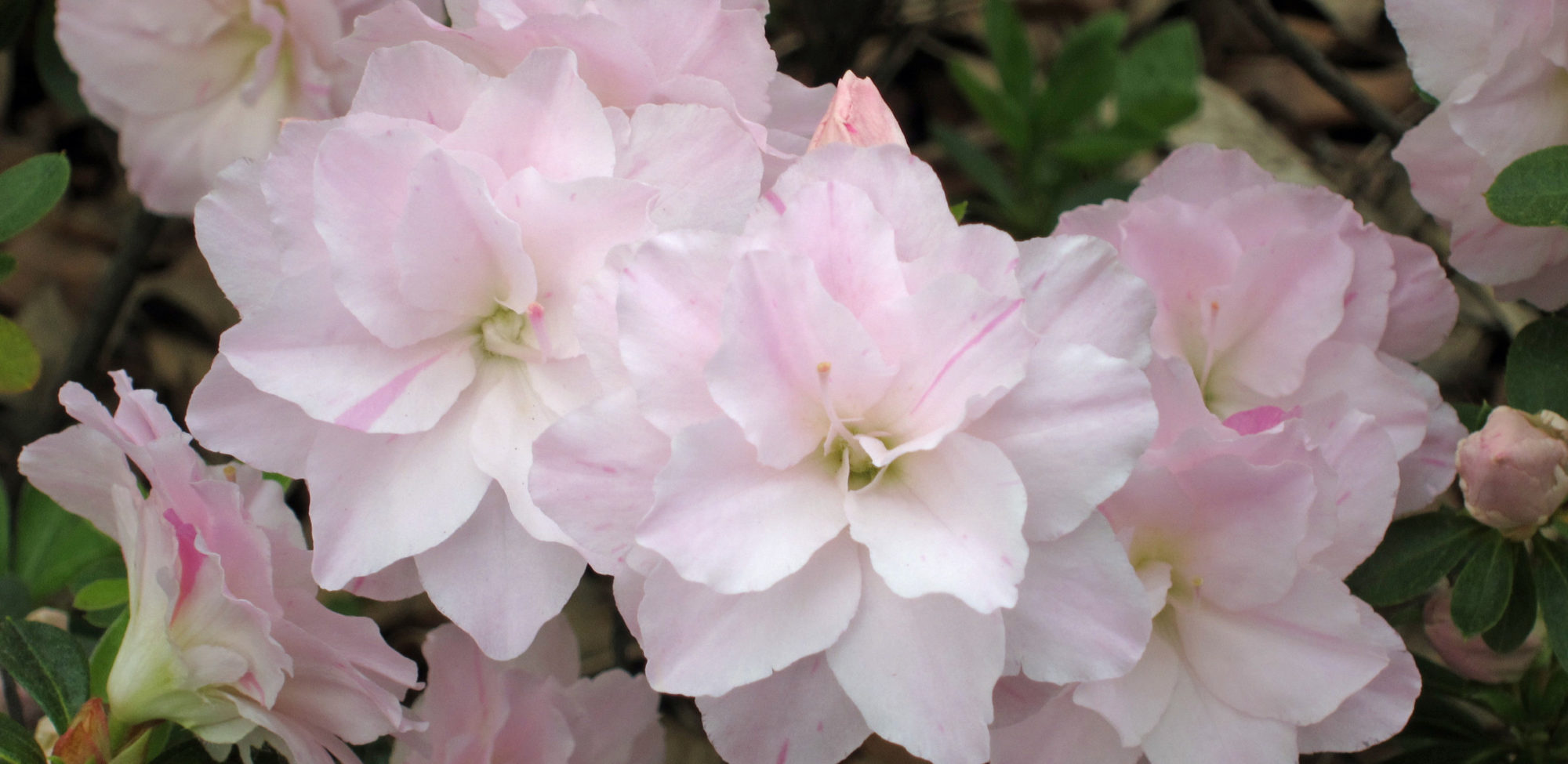fertilizer | nutritional deficiencies
fertilizer
Established azaleas typically do well without any additional fertilizer if the azaleas are kept well mulched. The humus from the decomposing mulch provides adequate nutrients for the azaleas and promotes the presence of mycorrhizal fungi which bring soil nutrients to the roots. By contrast, applying inorganic fertilizers decreases the presence of mycorrhizae, which increases the need for higher levels of soil nutrients. Thus, using inorganic fertilizers in any significant amounts tends to make the plants dependent upon their continued use. If you do fertilize, it is best to apply it between late fall and early spring when the plants are dormant. Avoid fertilizing after June, to keep from pushing plants into active growth before the winter cold.
Before using fertilizer in your landscape, get your soil tested. The test is usually quite inexpensive, and may be free. Your County Extension Service can probably supply instructions and supplies for the soil test. The results will show the current amount of all the essential nutrients, and will probably give some recommended types and amounts of fertilizer needed for the crop (azaleas) you plan to grow.
nutritional deficiencies
You may see localized nutrient deficiencies in particular plants. The most common problem by far is chlorosis, seen as a yellowing between the veins of the leaves while the veins remain green. It is caused by a lack of available iron due to a variety of reasons, including compacted soil, too much water, too much fertilizer, or soil acidity outside of the range needed by azaleas (pH between a low of 4.5 and a high of 6.0, where 7.0 is neutral). While spraying the foliage with chelated iron is a quick fix, that does not solve the underlying problem. If the problem is confined to one plant, try moving it. After digging it up, take a close look at the soil and the roots, and check the soil drainage and general looseness.
To loosen up heavy soil, add as much as 50% by volume of organic material such as composted leaves, fine pine bark, or any of the other products mentioned for use as mulch. If the roots have been damaged by overwatering, poor drainage or overfertilizing, there is no quick fix. About all you can do is trim away the rotted roots, remove the problem by replanting it in well drained soil, and give the plant time to grow some new roots.
To lower the pH (increase the soil acidity), sprinkle several handfuls of ferrous sulphate around the base of the plant. Never use aluminum sulphate, as the aluminum is toxic to azaleas.
To raise the pH (decrease the soil acidity), sprinkle several handfuls of ground dolomitic limestone or oyster shells around the plant. Don’t use hydrated lime, which will burn the plant. Wood ashes are good to raise the pH, and add phosphorus, potassium and micronutrients as well.
A nitrogen deficiency appears as yellowish leaves, small new leaves, and stunted plant growth. Use a fertilizer which will not reduce the soil acidity, such as ammonium sulfate, ammonium nitrate, or well rotted manure which has not been treated with lime.
A calcium excess or deficiency appears the same as iron chlorosis to begin with, followed by leaf tip burn and twisted leaf tips. A light application of gypsum, dolomitic limestone or ground oyster shells will correct a deficiency. Gypsum will do that without affecting the soil acidity, while limestone or oyster shells will also raise the pH (less acidity), which may not be desirable.
A potassium deficiency appears the same as iron chlorosis to begin with, followed by leaf tip burn, inward curling of the leaves, and premature leaf drop. Spraying with chelated iron is a quick fix, and sprinkling a small amount of potassium sulphate around the plant will have a longer lasting effect.
A severe phosphorus deficiency produces dull and unusually deep green leaves. They will then turn reddish brown and purplish brown, and eventually fall off. A mild phosphorus deficiency may result in reduced flowering and lighter than normal flower colors. The phosphorus in superphosphate migrates only very slowly in the soil, about one inch per year, so the best way to get it to the roots is to sprinkle a small amount in the bottom of the planting hole, or to mix some with the soil used to backfill the hole. To correct a phosphorus deficiency seen after planting, use diammonium phosphate instead, as its phosphorus migrates more rapidly.

